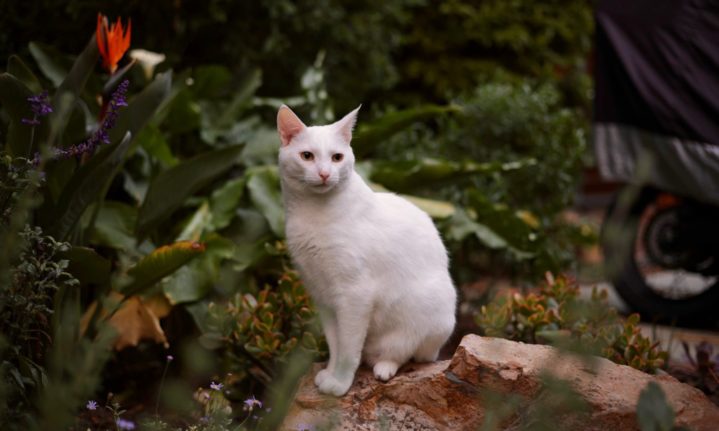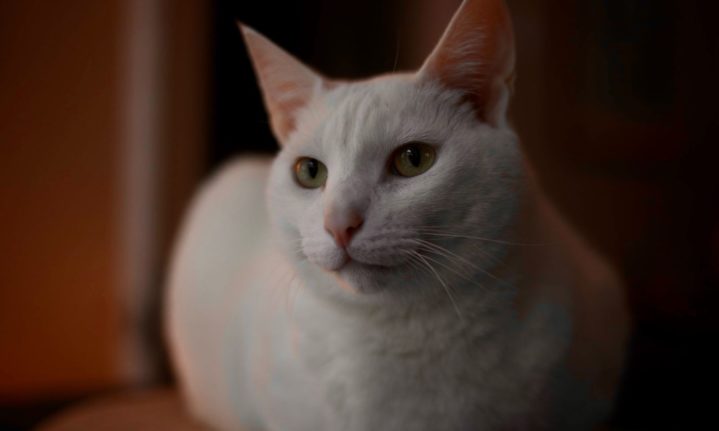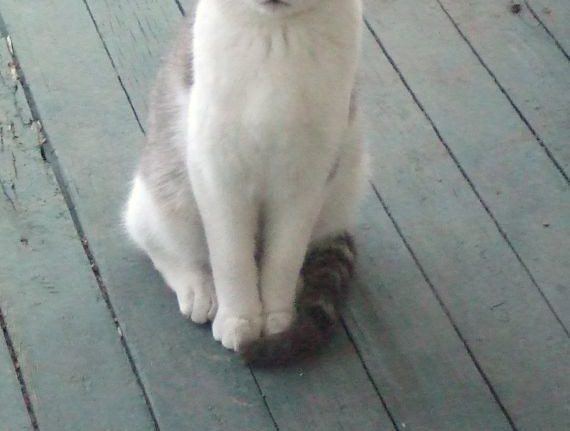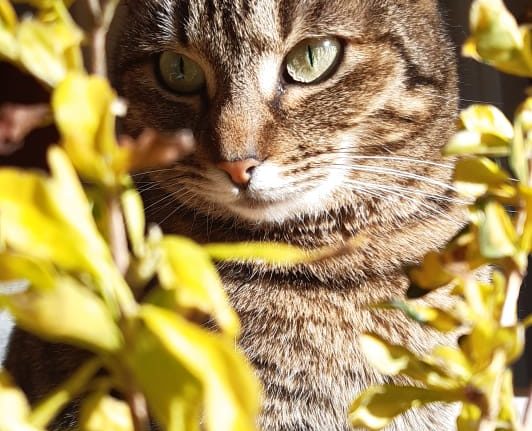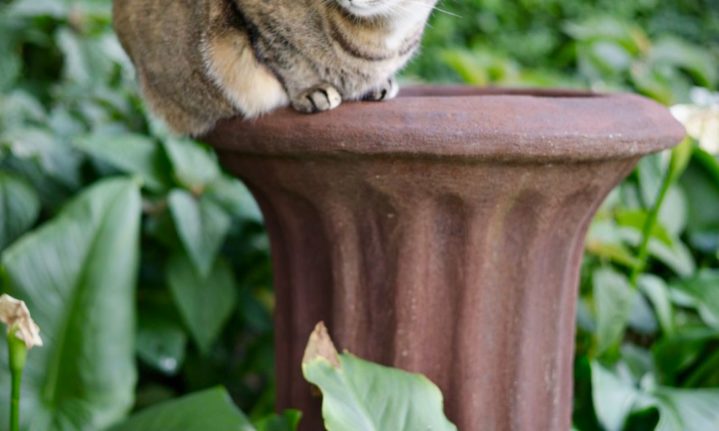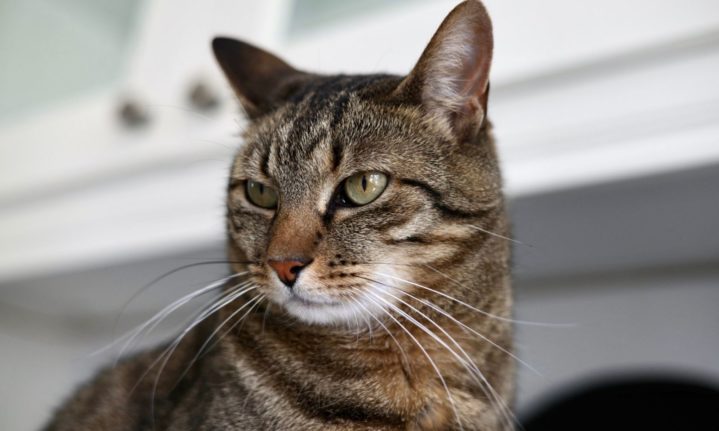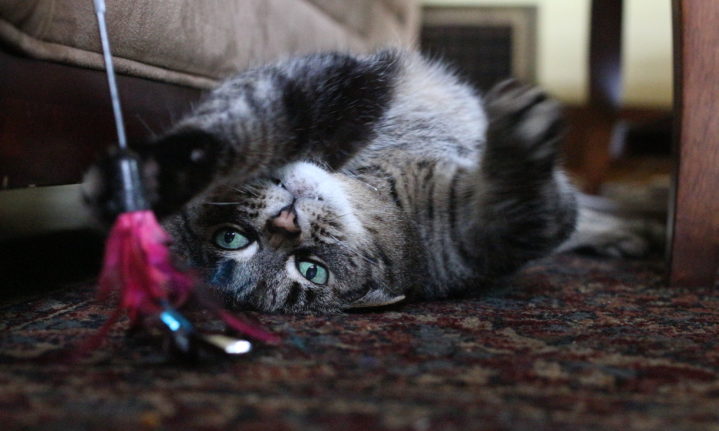A study in the Journal of Global Ecology and Conservation revealed that domestic cats have been implicated in the extinction of 26% of the world’s bird, mammal and reptile species on the IUCN’s red list, and are responsible for killing billions of wildlife every year, an understandably sensitive topic for cat lovers. But experience has revealed that to protect wildlife from cats, we need to enlist those who love cats the most, their owners.
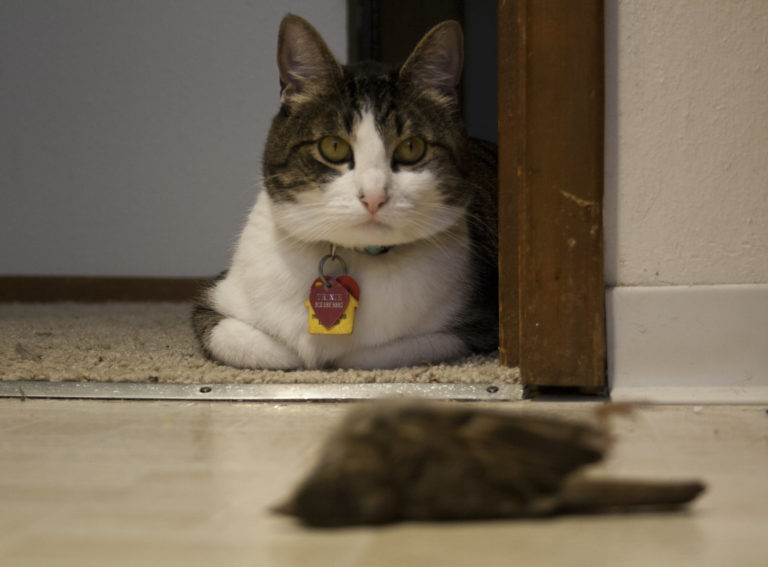
Studies have shown that domestic bring only 18% of their kill home. Picture: Flickr Commons
Even though cat owners are likely to love both their animals and nature, if asked to choose, they’ll probably pick their cat. This is the tussle conservationists are having with cat owners in a bid to reduce the number of wildlife cats kill.
In Australia, cats pose a threat of extinction to at least 120 species, with a report recommending that Australia’s 3.8 million pet cats be subject to night-time curfews. But Australia has been a closed ecosystem for many years, where indigenous species occur in an environment with relatively few predators.
The reason cats are implicated in so many extinctions is that most of those listed, occur in closed ecosystems such as island habitats, where animals have evolved with little to no predators. What about the wildlife that is more predator-savvy? Such as in South Africa, which already had its share of wild cat species such as the black-footed cat and caracal.
According to the study published in the journal Global Ecology and Conservation, which is titled ‘Caught on camera: The impacts of urban domestic cats on wild prey in an African city,’ the secret lives of Cape Town’s cats were shown to have an adverse impact on the local fauna.
To find out what cats really get up to outside of the home, 28 cats were equipped with cat-borne cameras across 22 different neighbourhoods in Cape Town. What they learnt is that cats return home with only a tiny portion of their kill.
These fuzzballs only bring home a mere 18% of their kill, which include the globally Endangered Western leopard toad, vulnerable Cape rain Frog, and the endemic orange-breasted sunbird.
Furthermore, they found that the population density of Cape Towns domestic cats is 330 times greater than indigenous predator species that occurred naturally. Domestic cats, therefore, place a greater strain on prey species than indigenous predators.
This has posed quite the conundrum for conservationists, who face the challenge of trying to limit the amount of wildlife killed by cats but need to tow a fine line in convincing defensive cat owners.
Getting cat owners on board
Artie Trouwborst, an environmental law specialist at the University of Tilburg in the Netherlands, received death threats after publishing a paper arguing that cat owners across the EU could be prosecuted under existing law for knowingly allowing their pets to hunt.
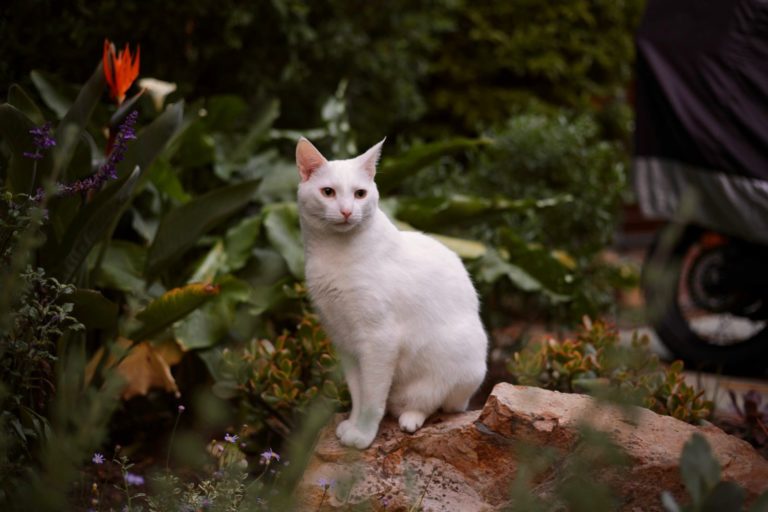
Picture: Anton Crone.
These so-called ‘cat wars’ range from arguments in Australia and New Zealand, where a municipality in Melbourne is looking into imposing a curfew on cats. A council in a New Zealand town of Omaui wants to introduce a ‘pest plan,’ where cat owners will not be allowed to replace their cats after they die to protect their native animals.
But an article by Aisling Irwin in New Scientist revealed that polarising views between conservationists and cat owners are at the heart of these cat wars
She writes that the chasm between cat owners and conversationalists becomes apparent when you ask for their views on measures to reduce hunting by cats. In New Zealand, conservationists were asked to rank nine interventions:
‘Conservationists were asked to rank the effectiveness of nine interventions. Top of their list was keeping cats indoors 24/7… At the bottom was neutering, registration and finally, microchipping.’
Vets were then asked to rank the same interventions based on cat welfare, acceptability, and placed these nine interventions in the opposite order
New Zealand’s Department of Conservation decided to use a technique called behaviour prioritisation, to identify the method considered acceptable to cat owners, and effective for conservationists.
They found that only 14% of cat owners are willing to implement a nighttime curfew, but that the vast majority of owners responded positively to questions of their pets safety or increasing family happiness.
Solutions are then coming to the fore to answer the arguments that a cats natural tendency is to hunt and inform cat owners about the potential dangers the cats encounter when left to roam at night and that certain diet and behavioural changes can reduce the cat’s tendency to hunt.
What can cat Owners do?
DR Rob Simmons, an honorary researcher at the University of Cape Towns department of biological sciences contributed to the initial study on the impacts of Cape Town’s cats on wild prey, provided a few recommendations for cat owners.

Studies have shown that increased playtime reduces the cat’s tendency to hunt. Picture: Flickr Commons
‘It is important to emphasise the risks to cats, especially on the boundary areas of TMNP from multiple sources, such as caracals, cars and contagions.’
It is often the case that it is in the cats best interest to stay in at night. This has benefits for both the cat and wildlife, where the cats tend to be nocturnal hunters and catch most of their prey at night, but are exposed to greater risk of cars and other predators such as caracals, especially for those cats who live on the urban fringe.
It won’t set a historical precedent to impose a curfew for cats, where Simmons comments that dogs are not allowed to wander, yet cats, who have a greater impact on wildlife, are.
Justin O’Riain, another contributor to the study and professor of behavioural ecology, suggests that a 1km buffer be set up around TMNP and cat ownership dissuaded there. Cats found in the area after dark can then be taken away from the borders of TMNP, reducing the amount of prey taken.
Birdlife South Africa has endorsed the use of brightly-coloured collars with a bell to be worn by cats. But Simmons states that this is unlikely to reduce the large predation on reptiles, which top the list of prey taken by Cape Town’s cats.
Cat owners who remain dissuaded by these views can still try and limit the wildlife kill of domestic cats, A study found that feeding cats meatier meals and increased playtime with the cat to reduce the domestic tedium reduce its tendency to hunt
ALSO READ










